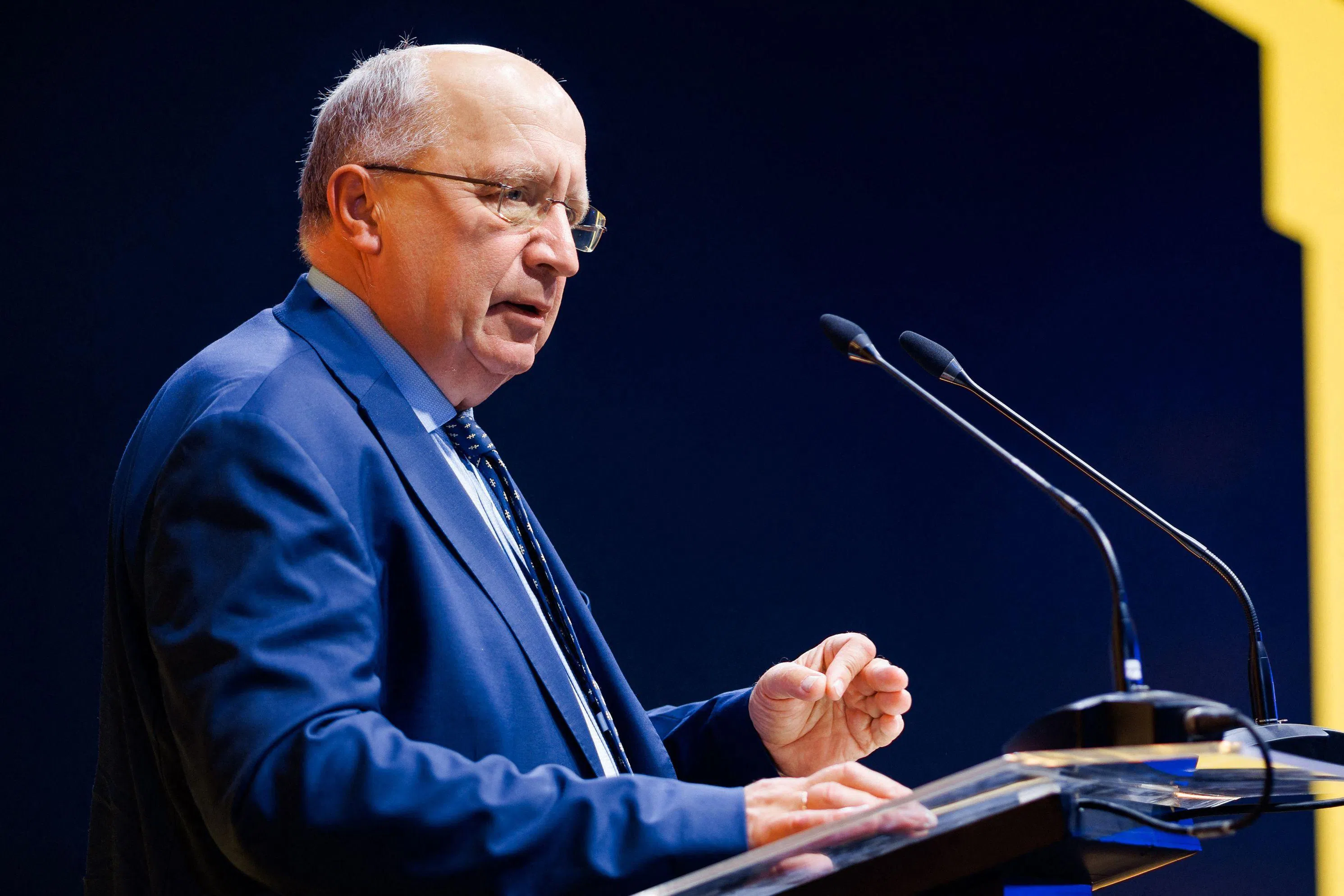Ukraine courts foreign cash for military ‘Silicon Valley’
Sign up now: Get ST's newsletters delivered to your inbox

Drones exhibited during the Defence Tech Valley 2025 investment summit in Lviv, Ukraine.
PHOTO: AFP
Follow topic:
- Ukraine is positioning itself as a military innovation leader, showcased at a defence tech fair in Lviv to attract foreign investment.
- The country has developed effective, low-cost drone defence systems, downing over 80% of Russian drones, unlike some NATO responses.
- Despite interest, Ukraine faces investment barriers and seeks co-production deals to share knowledge and advance defence technology.
AI generated
LVIV, Ukraine – At the opening of Ukraine’s biggest defence tech fair, arms executives and government officials were welcomed by a giant movie screen blaring an action-style trailer with heavy bass undertones.
The two-day event is part of Ukraine’s bid to position itself as a leader in military innovation and encourage hesitant foreign investment, more than 3½ years into the Russian invasion.
“We need to forget Silicon Valley – it’s the past. Ukraine is the future,” Europe’s commissioner for defence Andrius Kubilius said at the event, which began on Sept 16 and the details of which were made public only on Sept 19.
The crowd, gathered in the western city of Lviv, applauded.
The idea that Ukraine’s Western allies could learn from Kyiv has taken on new weight after more than a dozen Russian drones flew through Poland’s airspace
Moscow has denied targeting the Nato member, but for some, the incident exposed the alliance’s weaknesses.
Seen from Kyiv, the scrambling of jets and firing of advanced missiles to try to down the drones was an outdated – and far too expensive – response.
“We understood a very simple truth: that we do not have those capabilities which Ukraine has, to fight against drone invasion,” Mr Kubilius said.
Buzzing robots
To counter nightly Russian drone attacks,
It has been downing more than 80 per cent of the thousands of Russian drones that are fired at it every month, AFP analysis of Kyiv’s air force data shows.
On the other hand, the scrambled Nato forces shot down fewer than five of the 20-odd drones that flew through Poland last week.
Kyiv’s strategy has been to repurpose basic consumer tech for military purposes – such as strapping explosives to small first-person-view drones that are used to film aerial landscapes or stunts.
Their unmistakable buzz filled the exhibition zone at the Lviv fair.
Futuristic robots resembling oversized remote-controlled cars – designed to ferry weapons to the front or evacuate wounded soldiers from the battlefield – were also on display.
Adding to the Silicon Valley vibe, young engineers hovered over sleek screens showing how they could be integrated with artificial intelligence (AI).
“This is a display to show that Ukraine is tech-savvy and growing. That you need to be in Ukraine if you’re in defence tech,” said Mr Thomas Moreau, of the French defence trade association GICAT.

Attendees at Ukraine’s two-day Defence Tech Valley 2025 investment summit in Lviv.
PHOTO: AFP
‘Peanuts’
But beyond flashy displays, there is still a long way to go.
Foreign investment in Ukraine’s military technology is “peanuts”, said Mr Yaroslav Azhnyuk, chief executive of The Fourth Law, which makes AI systems for attack drones.
He said the West was missing the urgency of the situation, stressing the only way to beat Russia was by winning the technological arms race.
“It’s like watching the sequel of Don’t Look Up,” he said, referring to the dystopian movie where scientists try to alert oblivious and disinterested officials about an imminent catastrophe.

An unmanned ground vehicle in motion during the Lviv summit in Ukraine.
PHOTO: AFP
Foreign companies announced plans to invest more than US$100 million (S$130 million) in Ukrainian defence tech during the event, organiser Brave1, a government platform overseeing military innovation, said.
AI drone company Swarmer closed the largest public deal, securing US$15 million from US investors.
For comparison, an MP said recently that Ukraine is spending some US$170 million a day on the war.
Attendees told AFP that investment faces barriers, including strict regulations that de facto ban exports amid shortages.
“Ukraine has unique experience and technologies it’s ready to share,” said Mr Oleksandr Yarmak, a commander within the Nemesis military unit.
“But we have little time for this amid daily combat,” he added.

European commissioner for defence and space Andrius Kubilius addressing the tech investment summit.
PHOTO: AFP/BRAVE1
Officials are keen to share their knowledge of battlefield-proven tech, and Kyiv is pushing for other solutions – like joint investments abroad.
Ukraine and Poland on Sept 18 created a group to share training and operational knowledge
Ukrainian President Volodymyr Zelensky recently announced the first co-production deal in Denmark, while more than 25 companies are moving some production to Ukraine, Defence Minister Denys Shmyhal said on Sept 19.
Event organiser Brave1 is patient.
“It’s a learning curve that we are going through,” Mr Artem Moroz, its head of investor relations, told AFP.
“As time goes on, the investment rounds are getting bigger.” AFP

